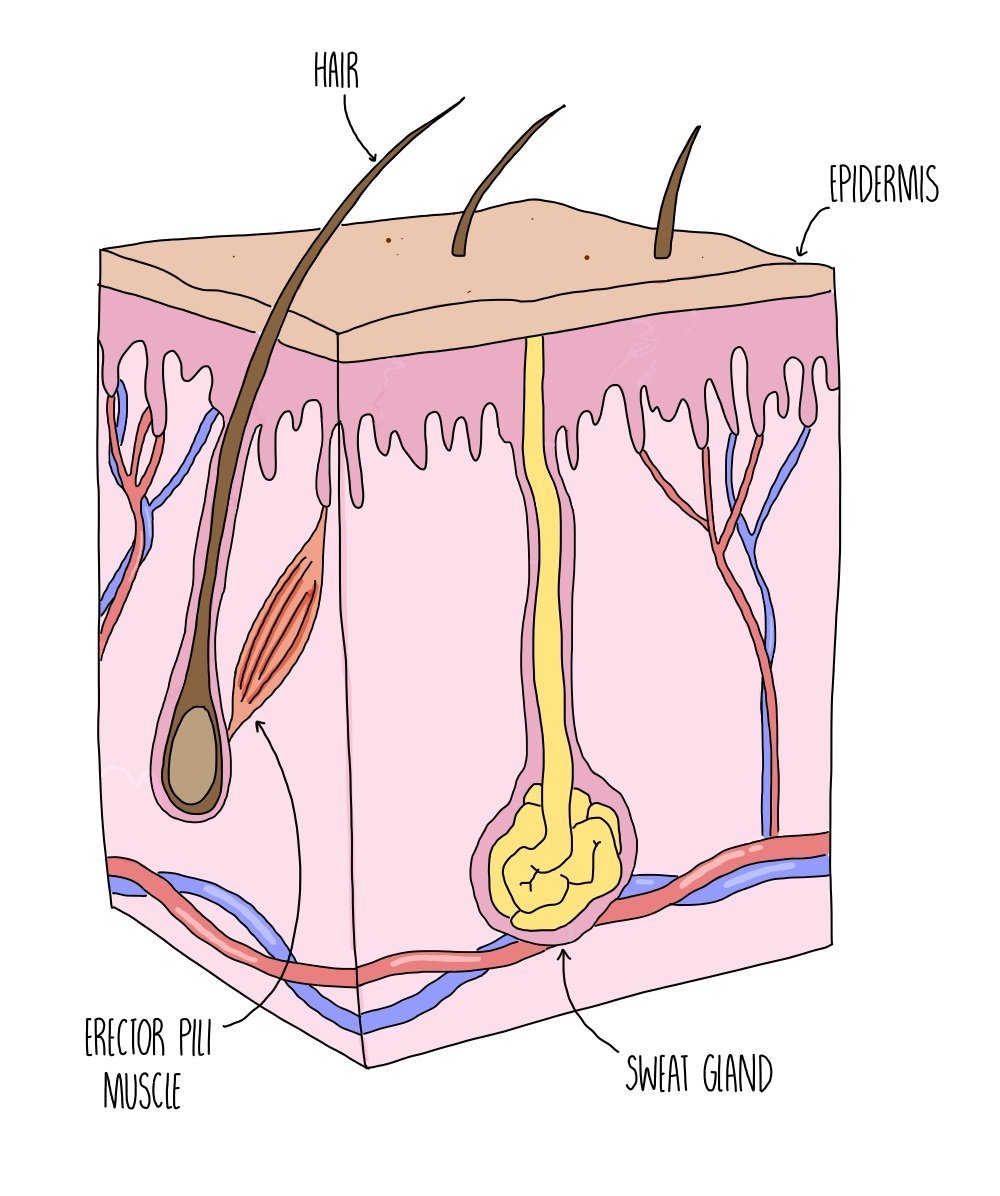Homeostasis
Homeostasis
Homeostasis is the maintenance of a constant internal environment. Things like our temperature, blood pH and blood glucose concentration needs to stay relatively stable in order to keep our cells functioning effectively. If internal conditions such as temperature or pH within our bodies don’t remain within certain limits, then enzymes will become denatured. Fluctuations in temperature result in hydrogen bonds breaking within the enzyme’s structure whereas changes in pH cause hydrogen and ionic bonds to break. The enzyme loses the shape of its active site and can no longer catalyse important biological reactions, such as respiration or DNA replication.
Negative and positive feedback mechanisms
Conditions within our bodies which are subject to homeostasis (such as temperature, pH and blood glucose concentration) are controlled by negative feedback mechanisms. These are mechanisms which act to reverse a change in the body - i.e. if temperature increases, a negative feedback mechanism ensures that changes to our body occurs in order to reduce our body temperature. The change in our body is detected by receptors (e.g. thermoreceptors which detect temperature or chemoreceptors which detect pH) and the reversal of the change is brought about by effectors (such as sweat glands which can modify the amount of sweat produced in order to change our body temperature). Negative feedback mechanisms therefore enable conditions within our body to remain within certain limits, fluctuating around the normal level.
In contrast, positive feedback mechanisms will amplify a detected change, moving conditions away from the normal level. They are used to accelerate a biological pathway, for example, the formation of a blood clot after an injury. At the site of a wound, activated platelets release a chemical which results in further platelet activation. This causes platelets to rapidly accumulate at the site of the wound, forming a blood clot. Positive feedback is not involved in homeostasis, because it does not keep internal conditions within a normal range.
Control of body temperature
Any changes in our body temperature are detected by specialised receptors which are sensitive to temperature, called thermoreceptors. The thermoreceptors send a nerve impulse along a sensory neuron to a part of the brain called the hypothalamus, to indicate that a change in temperature has occurred. The hypothalamus sends a nerve impulse along a motor neuron to an effector. An effector is a muscle or a gland which can carry out the following responses to modify body temperature:
Responses to reduce body temperature:
Vasodilation - arterioles near the surface of our skin become wider (dilate), allowing more blood to flow through them. This increases the amount of heat that can be lost from the surface of our skin through radiation. This is the reason that you might look pink and flushed when you’re too hot.
Sweating - sweat glands increase the secretion of sweat. When sweat evaporates from our skin’s surface, it takes heat energy with it which cools us down.
Hairs lie flat - erector pili muscles underneath our skin relax, which causes the hair on our body to lie flat. This means that less air is trapped by the small hairs on our skin, making us feel cooler (since air is a good insulator).
Responses to increase body temperature:
Vasoconstriction - arterioles near the surface of our skin become narrower (constrict), so less blood is able to flow through them. This minimises the amount of heat that can radiate from the surface of our skin.
Reduced sweating - sweat glands reduce the secretion of sweat. Sweat normally cools us down by removing heat energy from our bodies when it evaporates, so the less sweat secreted, the less heat is lost.
Hairs stand up - erector pili muscles underneath our skin contract, which causes the hair on our body to stand on end. The hair traps a layer of air which is a good insulator, preventing heat loss from our body.
Shivering - muscles contract in spasms, increasing the amount of respiration inside the muscle. Heat is generated as a by-product of respiration.
Hormones - the hormones adrenaline and thyroxine are released. These hormones increase the amount of respiration happening in our bodies, resulting in the generation of more heat.
Hormones and transcription factors
Hormones can alter gene expression by affecting the activity of transcription factors. Transcription factors are proteins which bind to regions of DNA at the beginning of a gene (called the promoter region) to either activate or inhibit transcription of the gene. Transcription factors which stimulate transcription are referred to as activators whereas those that inhibit transcription are called repressors.
Steroid hormones (such as oestrogen) and thyroid hormones are able to cross the cell surface membrane and enter the nucleus of the cell, where they affect gene expression by binding to transcription factors. For example, when body temperature drops, the hormone thyroxine is released. Thyroxine enters the nuclei of cells where is binds to the thyroid hormone receptor (a transcription factor). This receptor is usually bound to the promoter region of a gene involved in metabolism. The thyroid receptor acts as an inhibitor, preventing the transcription of the gene which codes for a protein which functions to increase metabolism. But when thyroxine binds to the thyroid receptor, the receptor now acts as an activator. Transcription of the gene increases, which is translated into a protein which increases the rate of metabolism. Since heat is a by-product of metabolism, body temperature is increased.
Other hormones (such as protein hormones) are unable to cross the cell surface membrane. Instead they work by activating second messenger molecules in the cytoplasm of the cell. The second messengers activate enzymes called protein kinases, which triggers a chain of reactions inside the cell. The chain of reactions results in the activation of transcription factors, which will then bind to the promoter regions of certain genes to alter gene expression.





